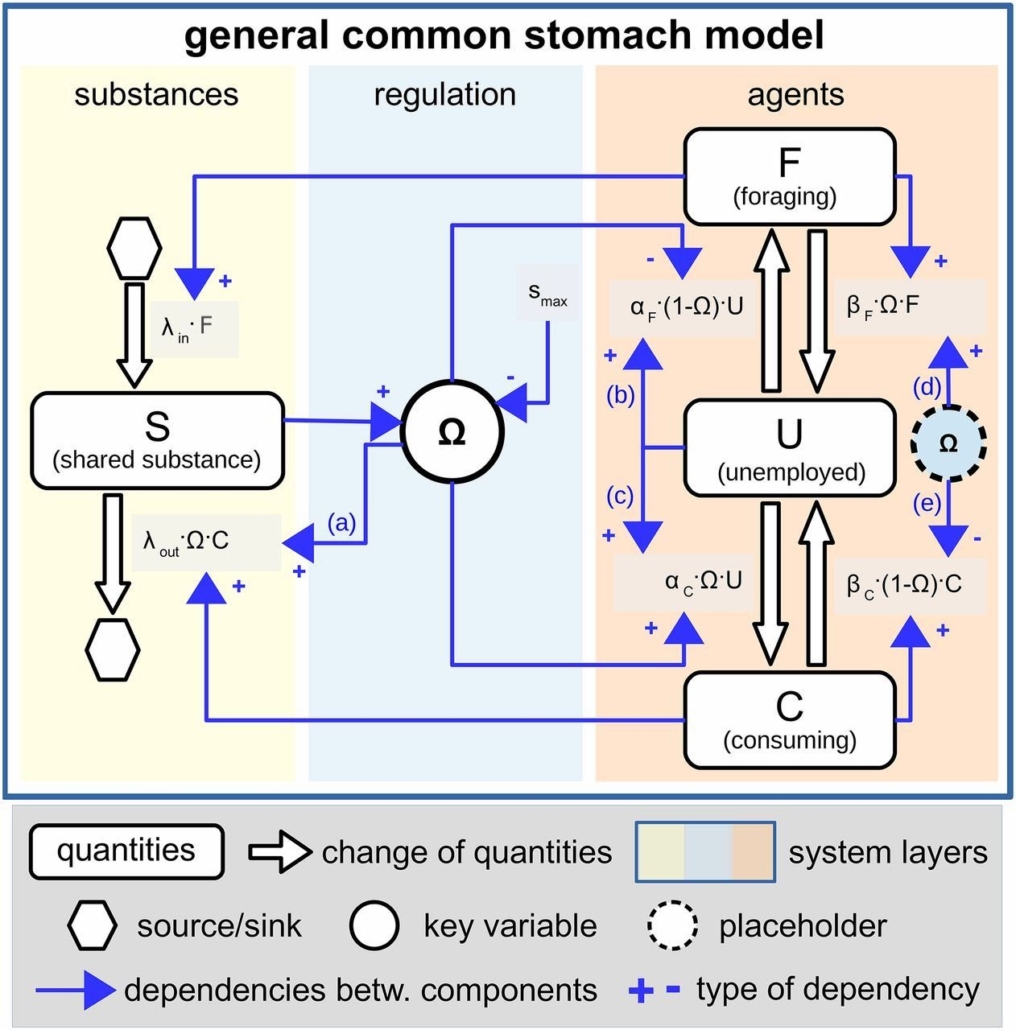Common stomach
Proceedings of the National Academy of Sciences, 2018, 115 (52) 13180-13185; DOI:10.1073/pnas.1807684115
Since 2011, Thomas Schmickl has been constructing a series of mathematical models with Prof. Istvan Karsai, East-Tennessee State University (USA) about a certain regulation mechanism that he had discovered in paper wasps before. They identified analogous regulation mechanisms in eusocial ants and in honeybees. This principle of decentralized mechanisms of self-regulation of substance gathering and substance usage in a society of autonomous cooperating agents (wasps, bees, ants, robots, …) was called „common stomach“ by them. In 2018 they published the specific mechanisms of ants, wasps and bees, as well as an ODE-based top-down model of the core element of the common stomach in the journal PNAS, see figure on the left. It shows that complex colony regulation can be explained by simple rules of interaction amongst its components. To their knowledge this model is the simplest mechanism known so far to explain social insect self-regulation concerning building materials and nutrient intake: On the microscopic mechanism level it only assumes linear dependencies of behavior to stimuli, in order to achieve complex global regulation and patterns on the macroscopic system level.
See Schmickl, T., & Karsai, I. (2018). Integral feedback control is at the core of task allocation and resilience of insect societies. Proceedings of the National Academy of Sciences, 115(52), 13180-13185 for more information (Open Access).


 Artificial Life Lab Graz
Artificial Life Lab Graz